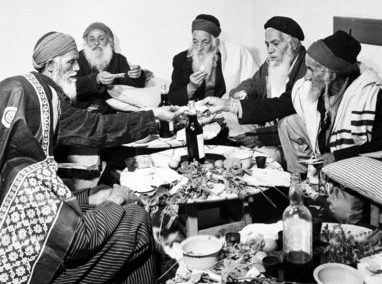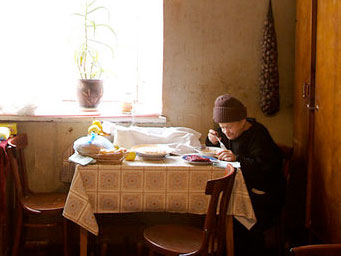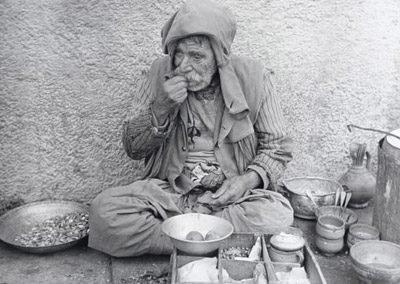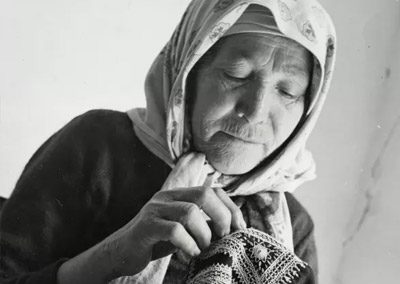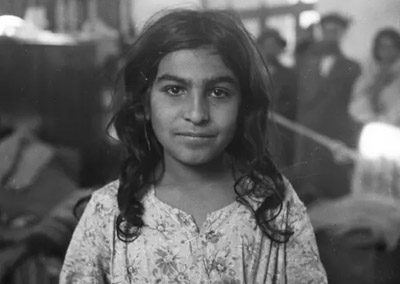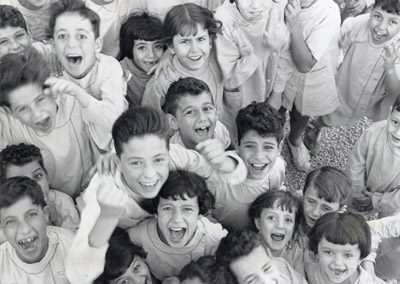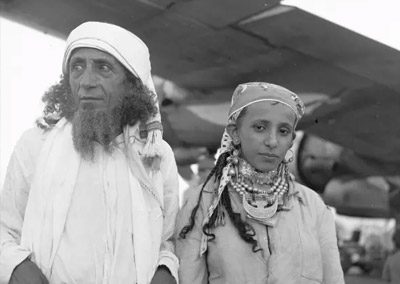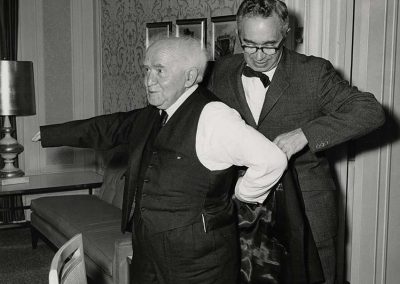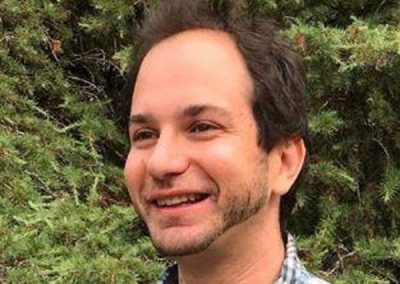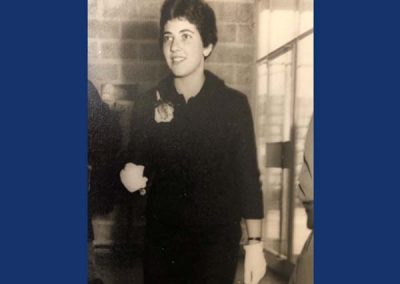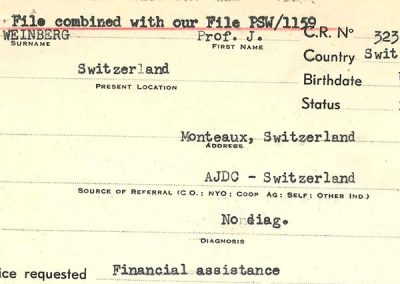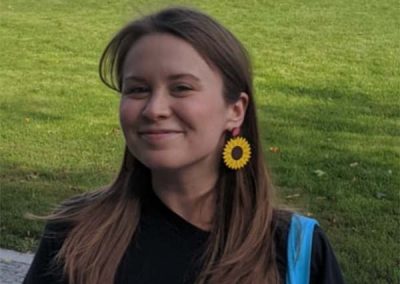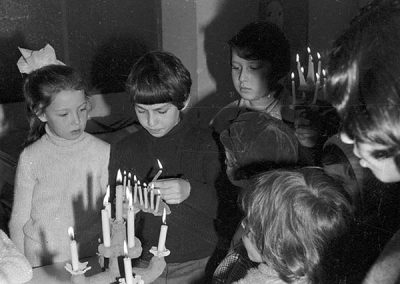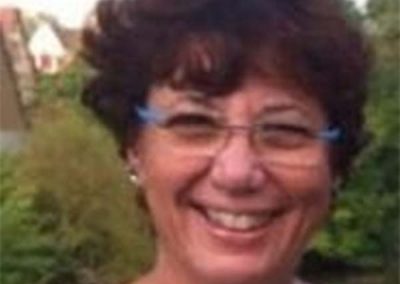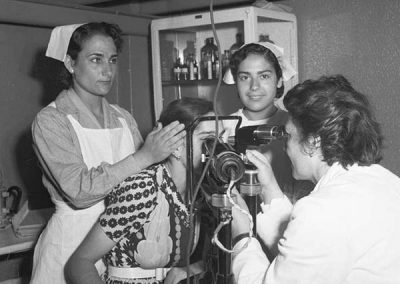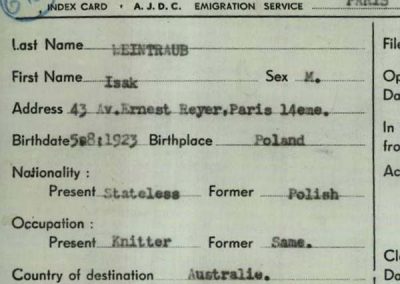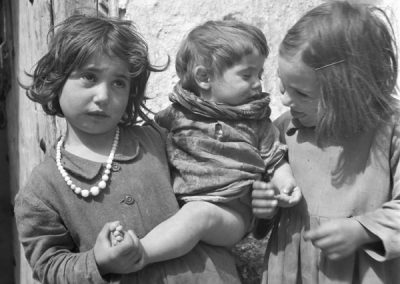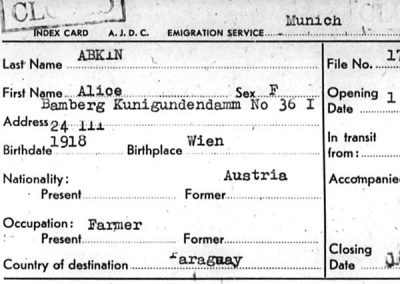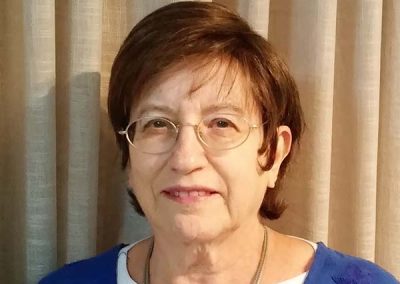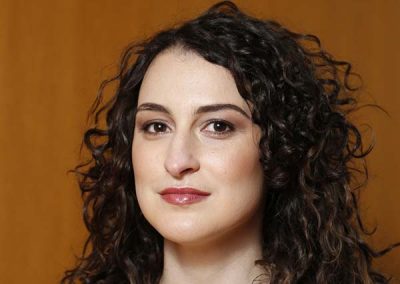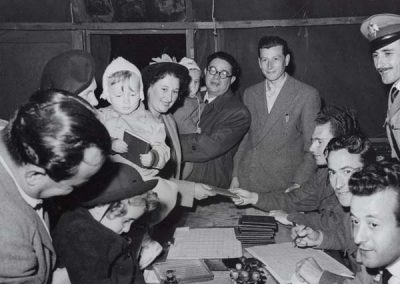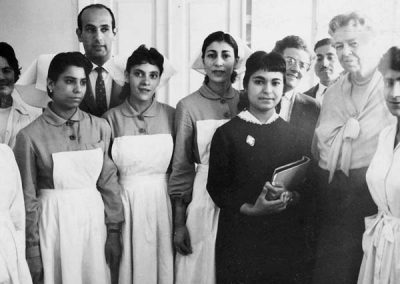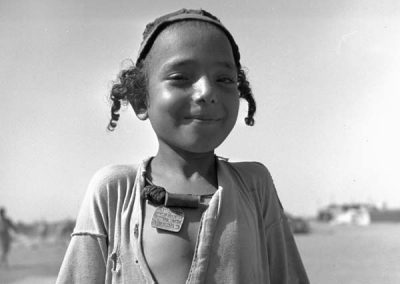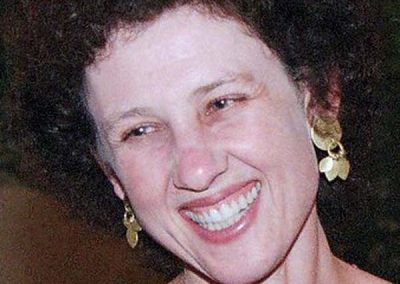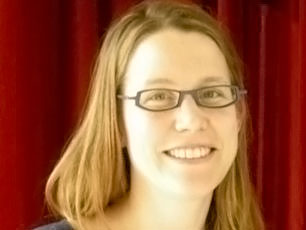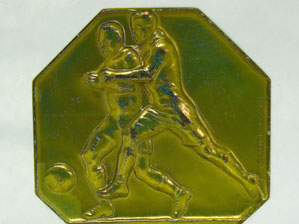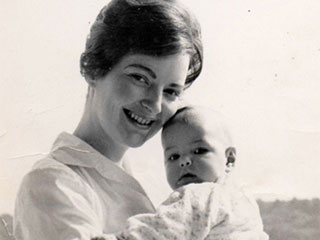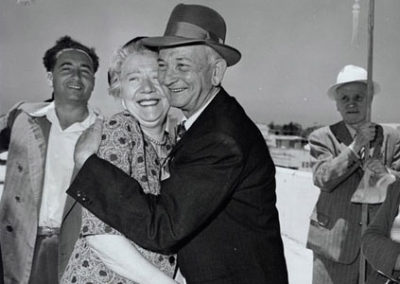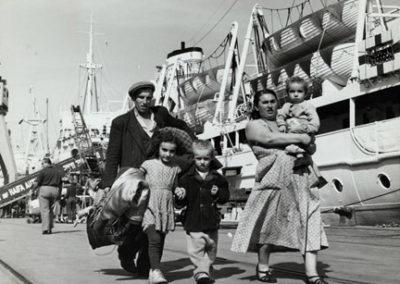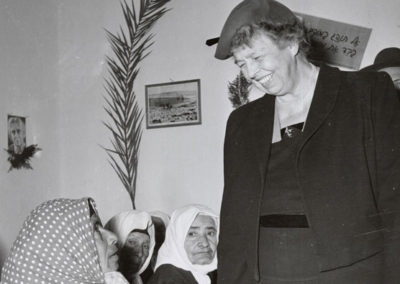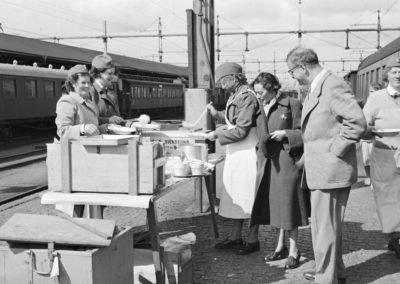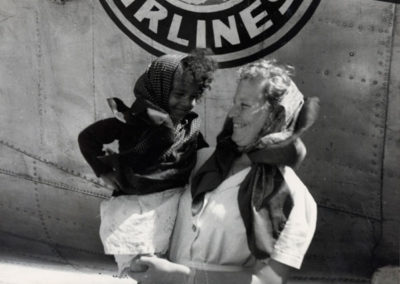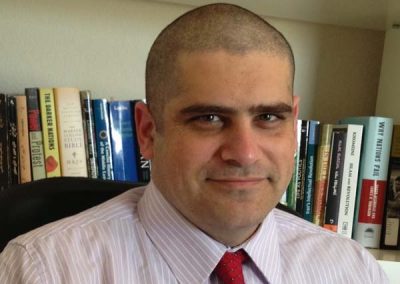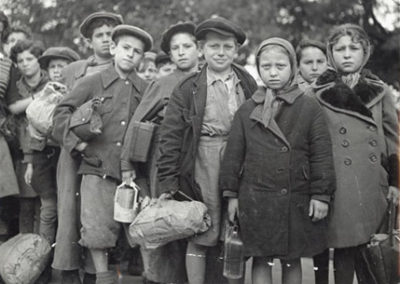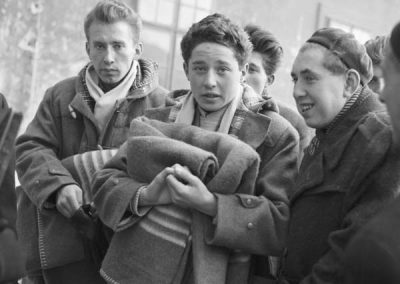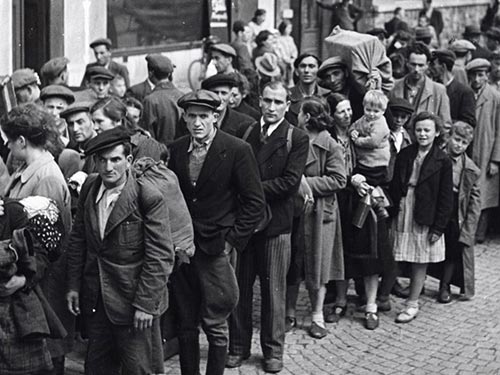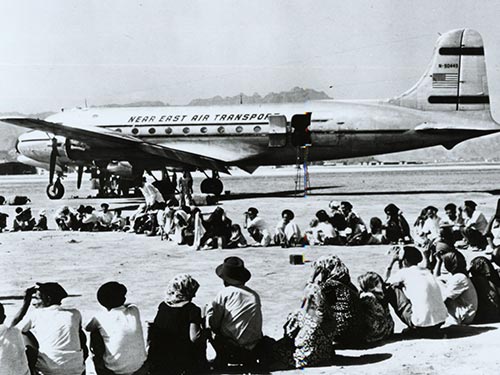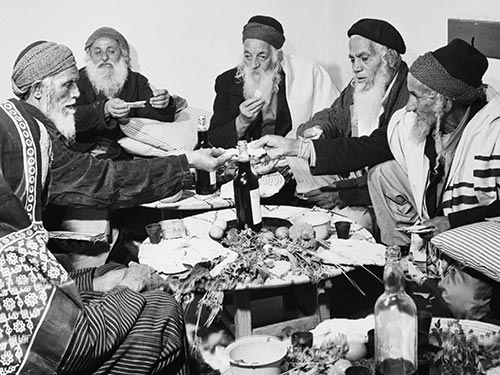JDC in the 1950s
Yemenite resident of MALBEN’s Kfar Zkenim at Ein Shemer working on a traditional embroidery project.
c.1952
JDC’s first cargo of preserved kosher beef is loaded aboard the SS Ashburn.
New York harbor, June 1919
Grappling with the trauma of the aftermath of the Holocaust and the unprecedented needs in Israel, JDC was extensively involved with supporting every facet of immigration to the new state, from financing dramatic rescue operations to operating programs that facilitate immigrant integration into Israeli society. Amid these dramatic developments for world Jewry, JDC continued to assist Jewish communities in Muslim countries and to help with reconstruction in European Jewish communities.
In Depth
1950s : Jews in the Muslim World—The Ingathering to Israel and Aid for Those Left Behind
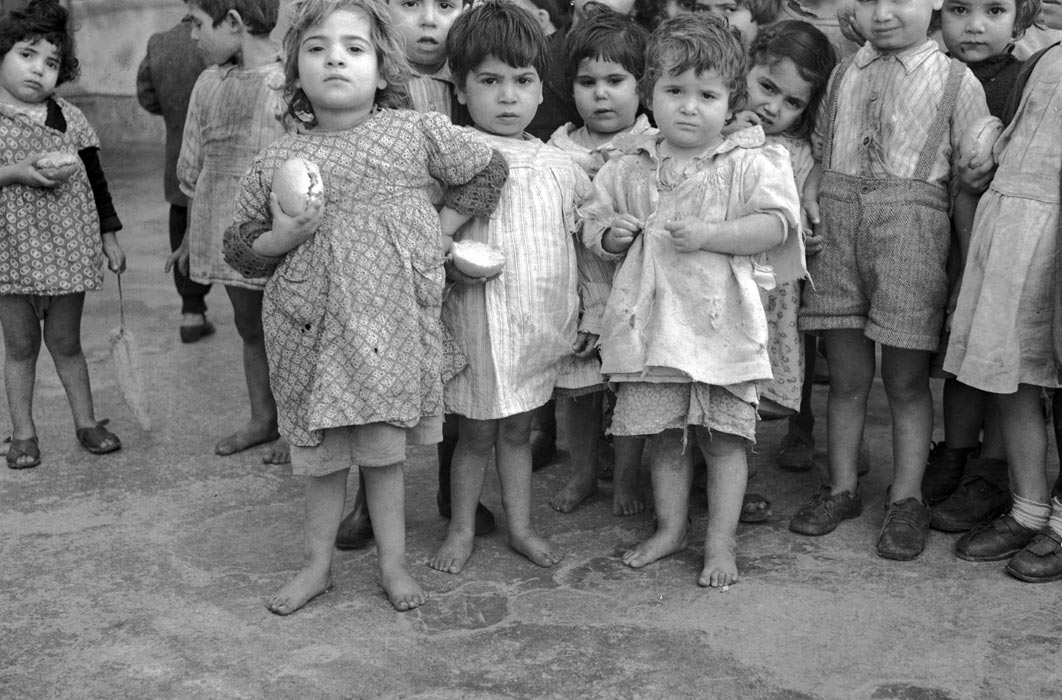
Youngsters being fed at a JDC-supported kindergarten in the ghetto of Tripoli
In 1949, JDC began intensive feeding and health programs in North Africa to combat malnutrition and disease in an area with a staggering rate of infant and child mortality.
Tripoli, Libya, c.1951.
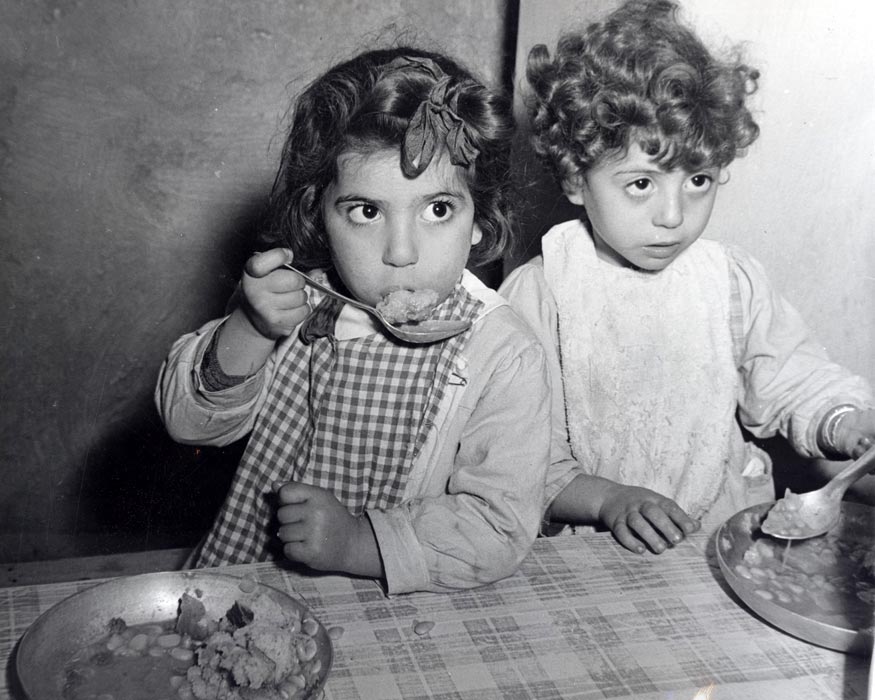
Girls eating a hot meal at the JDC-supported Alliance School in Tunis
Tunis, Tunisia, c.1951.
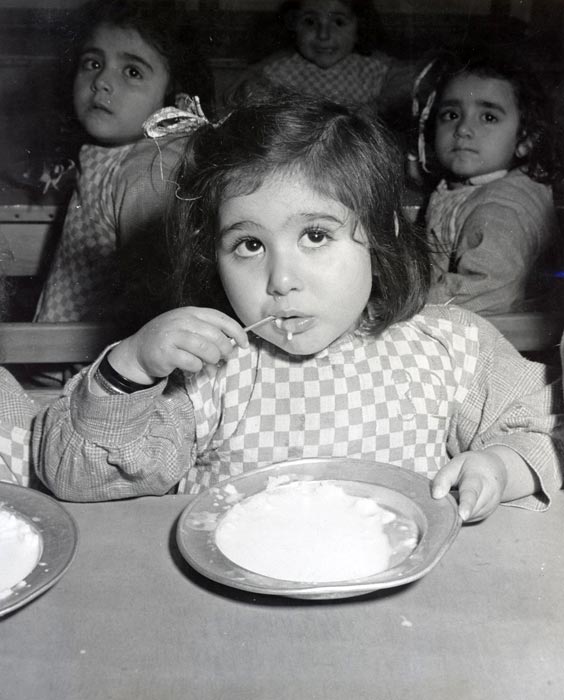
One of the 70 children being fed at a day nursery subsidized by JDC in Constantine, Algeria
JDC supplied hot lunches, plus morning and afternoon snacks, for some 30,000 schoolchildren in Muslim countries.
Constantine, Algeria, c.1951.
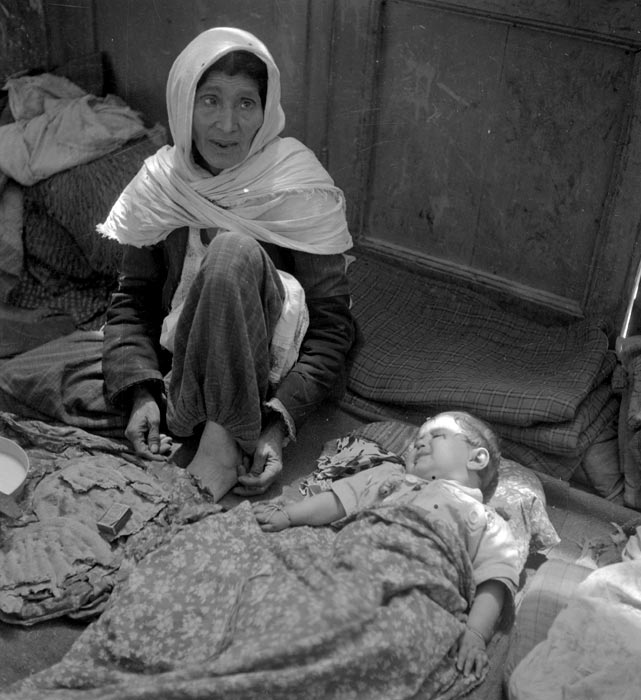
Jewish refugees from Kurdistan, in northwestern Iran, in a JDC-supported transit camp in Tehran
Anti-Jewish outbreaks drove thousands of Kurdish Jews across the mountains to Tehran, where they received food, shelter, and medical care from JDC while waiting with emigrants from Iraq to depart for Israel.
Tehran, c.1951.
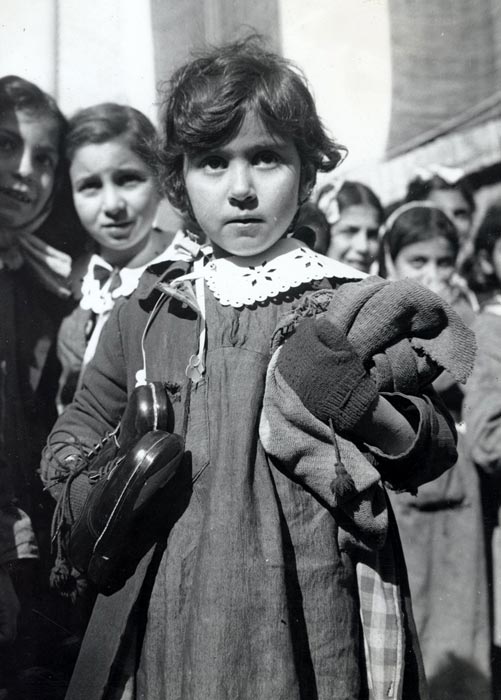
Young girl with shoes and clothing distributed by JDC in Tehran
In 1951, JDC allocated nearly $2 million for welfare services, medical care, and other activities in Morocco, Libya, Algeria, Iran, and other Muslim countries.
Tehran, c.1951.
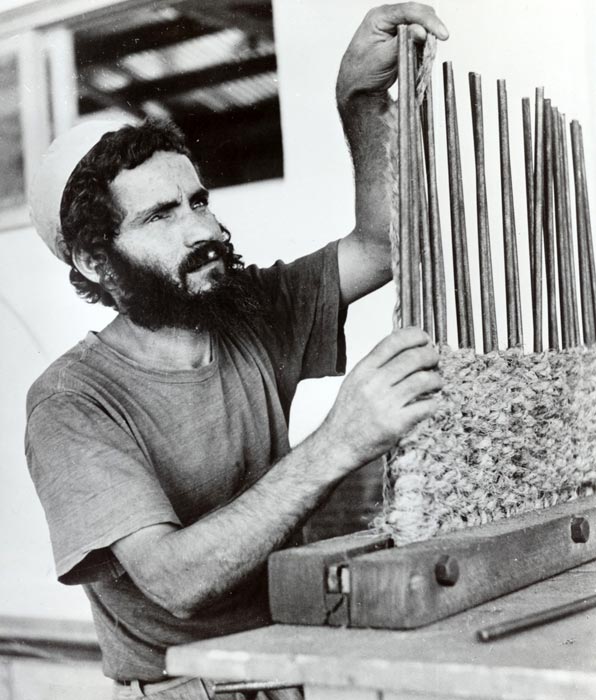
One of the Yemenite residents of Kfar Uriel, the JDC village for the blind near Gedera, at a weaving loom
At Kfar Uriel, some 85 blind men and their families, mainly immigrants from North Africa and Yemen, supported themselves by weaving mats and baskets and making mattresses, wicker chairs, brooms, brushes, and carpet beaters.
Israel, 1951.
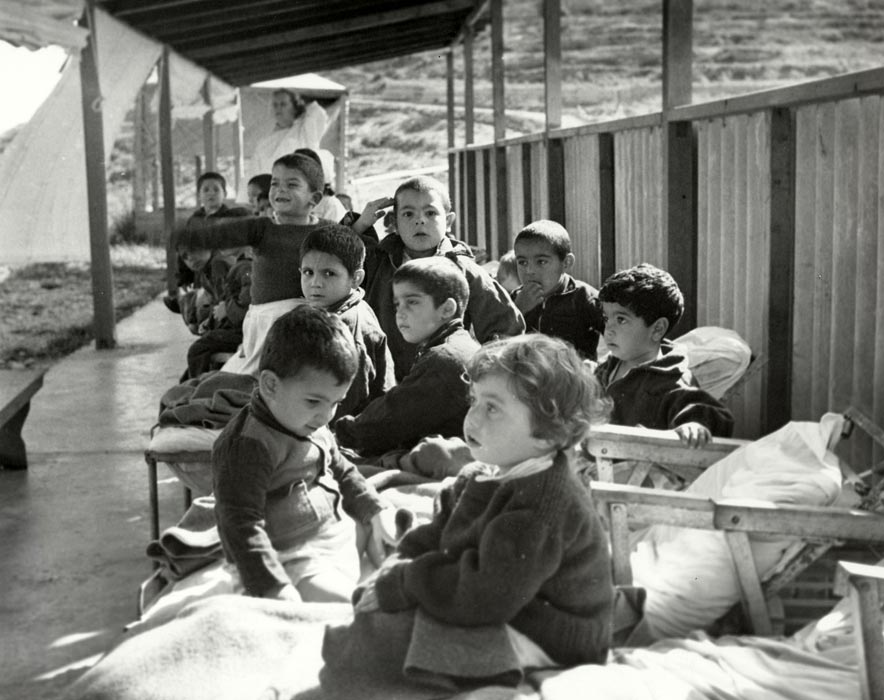
Youngsters suffering from tuberculosis, mostly immigrants from North African and other Muslim countries, at the Eitanim Children’s TB hospital in Jerusalem
MALBEN’s extraordinary success in treating thousands of TB patients in the early 1950s helped bring Israel’s number-one health problem under control.
Jerusalem, 1952.
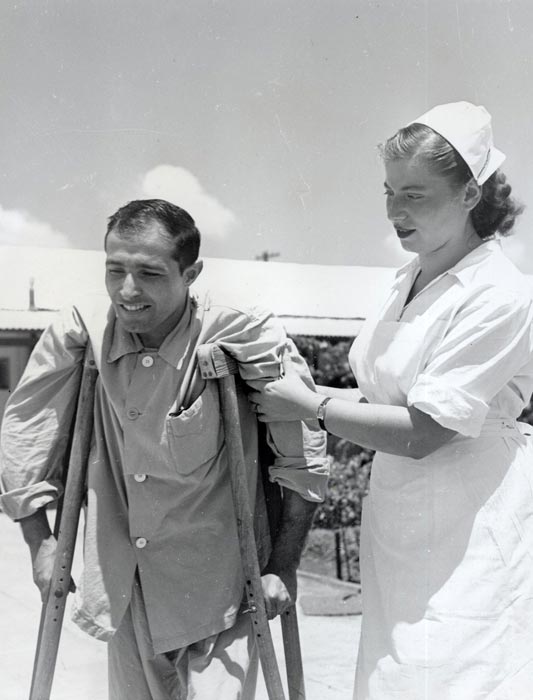
Jewish refugee from Tripoli, Libya, with new crutches at a MALBEN hospital facility
In 1949, JDC joined with the Jewish Agency and the State of Israel to create MALBEN, a network of institutions and services for handicapped, elderly, and chronically ill immigrants. JDC assumed full financial and administrative responsibility for MALBEN in 1951.
c.1952.
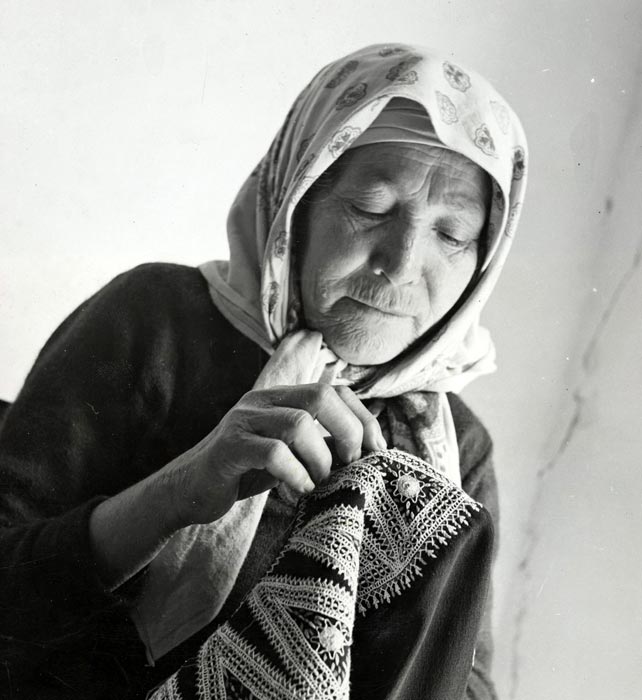
Yemenite resident of Malben’s Kfar Zkenim at Ein Shemer working on a traditional embroidery project
At Kfar Zkenim, the elderly residents developed a sense of independence and pride by working in the kitchens and dining rooms, staffing the clinics, running the post office, and engaging in gardening, handicrafts, and administrative duties.
Yemen, c.1952.
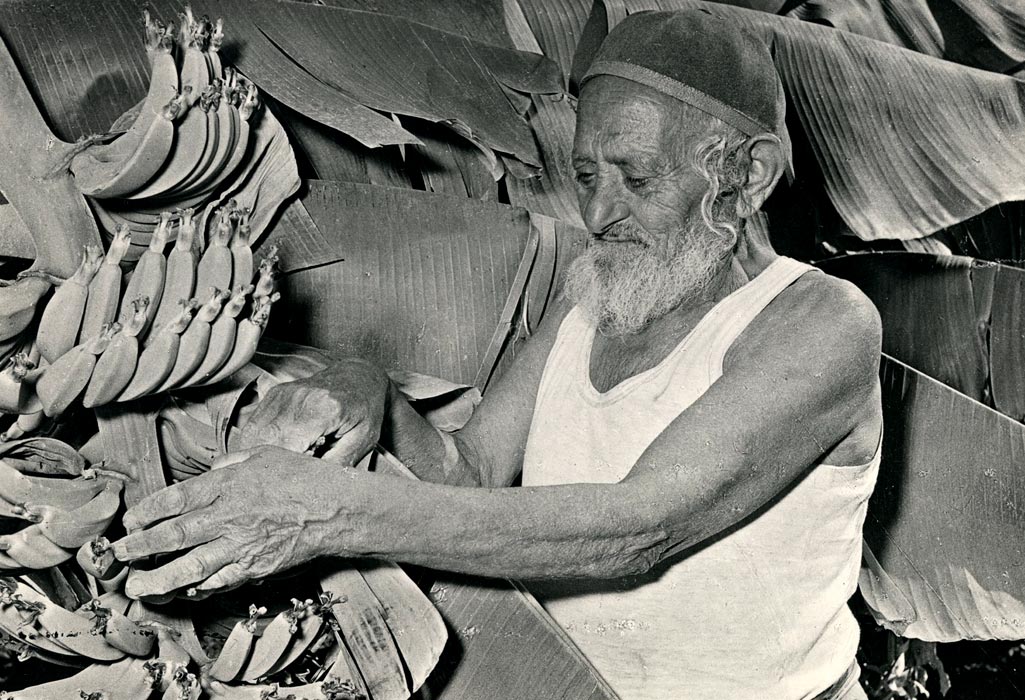
Yemenite Jew sorting bananas at Kfar Zkenim, a unique MALBEN village for the aged at Ein Shemer
Built on the site of a former British Air Force base, which was converted to a facility for elderly Yemenite immigrants brought to Israel through “Operation Magic Carpet,” the village was opened in 1953, with a projected capacity of 1,200 residents.
Yemen, 1950s.
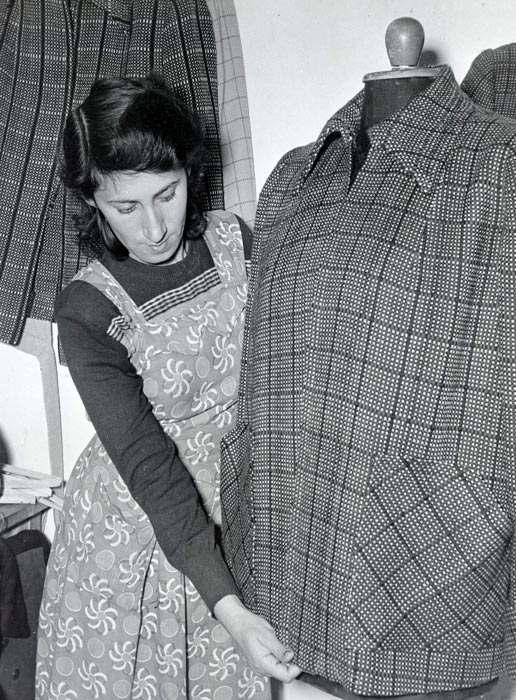
Working mother in a MALBEN sheltered workshop in Lydda (Lod)
Under the supervision of medical personnel, hundreds of handicapped and chronically ill workers were employed in JDC-subsidized sheltered workshops that produced goods for the Israeli marketplace.
Israel, 1950s.
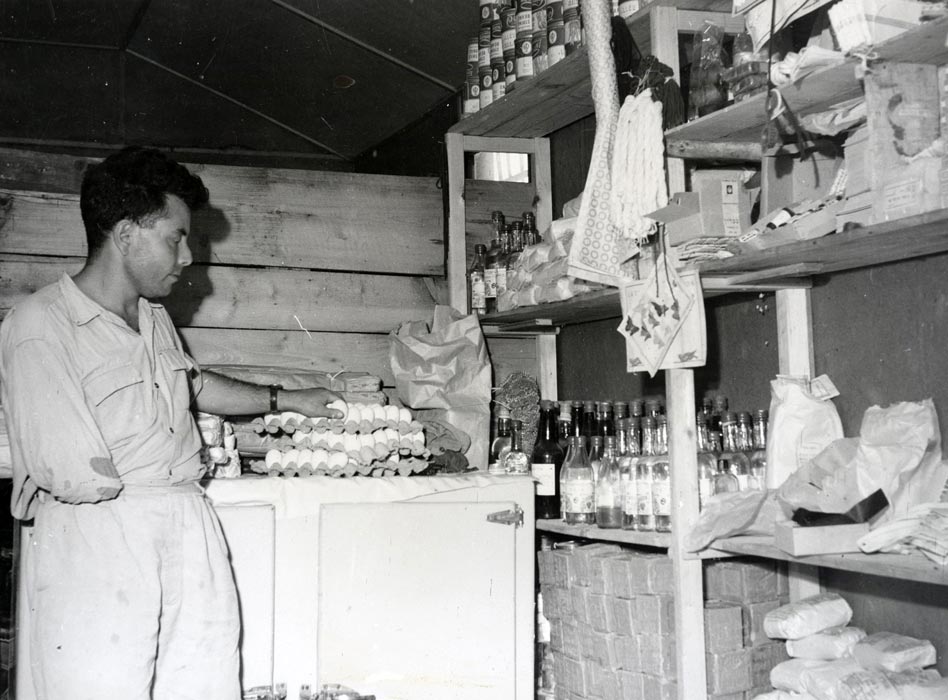
Handicapped immigrant working in his grocery, set up with MALBEN assistance, in Tel Aviv
By 1955, MALBEN’s rehabilitation loan fund had helped in the opening of over 4,500 small businesses, providing an independent income for some 19,000 people.
Tel Aviv, 1950s.
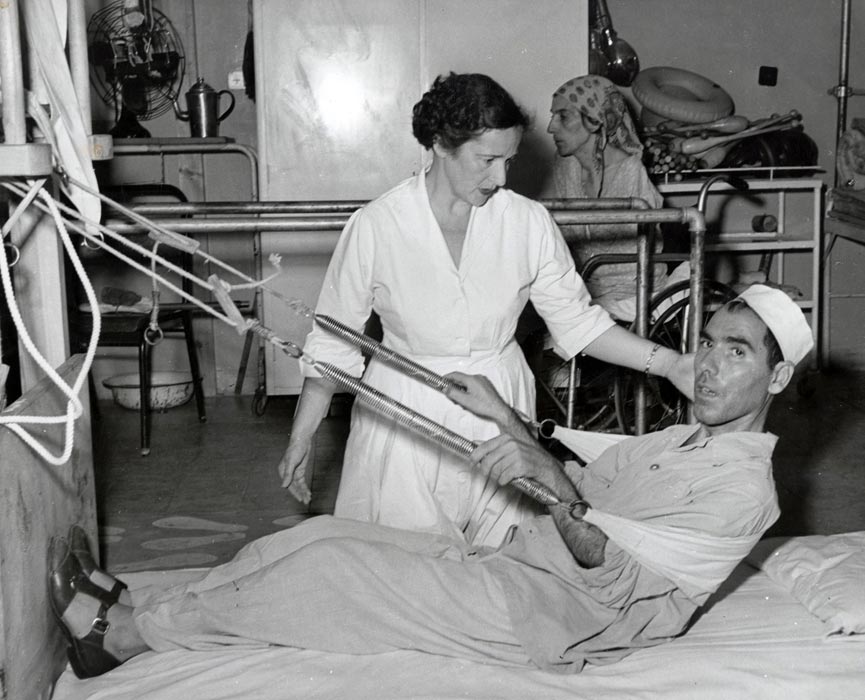
Medical care at a MALBEN facility for physically disabled residents
Providing much-needed therapy, prosthetic appliances and special equipment, vocational training and job placement, MALBEN’s rehabilitation program helped handicapped newcomers become useful members of society.
c.1954.
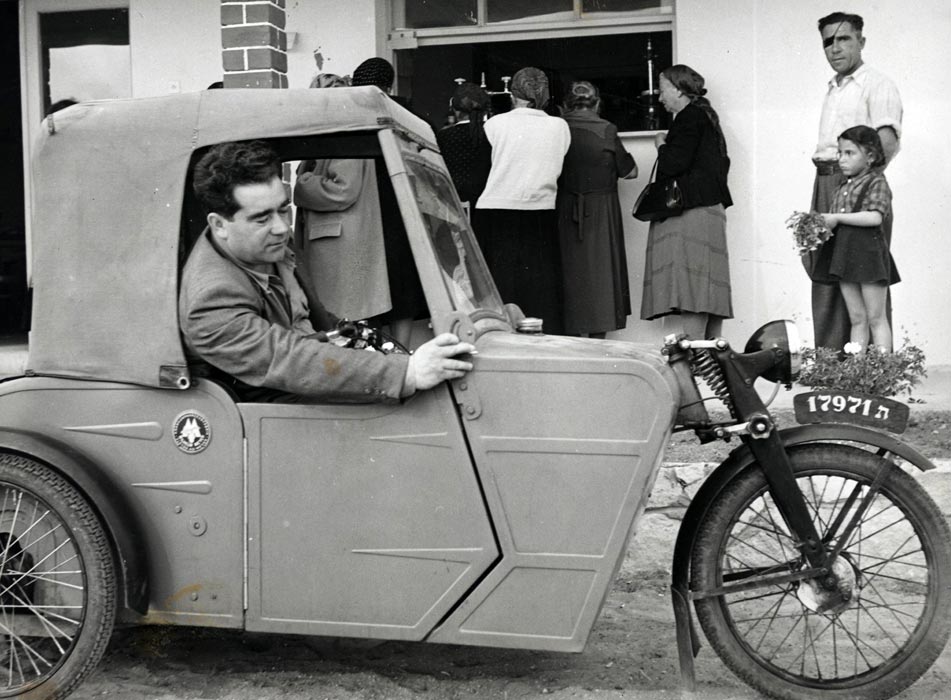
A Polish immigrant, who lost both legs in a pogrom, operating a motorized “wheelchair” furnished by MALBEN
MALBEN also provided hospital care, fitted the patient with artificial legs, and advanced him the funds to open his own café.
Ein Shemer, Israel, c.1954.
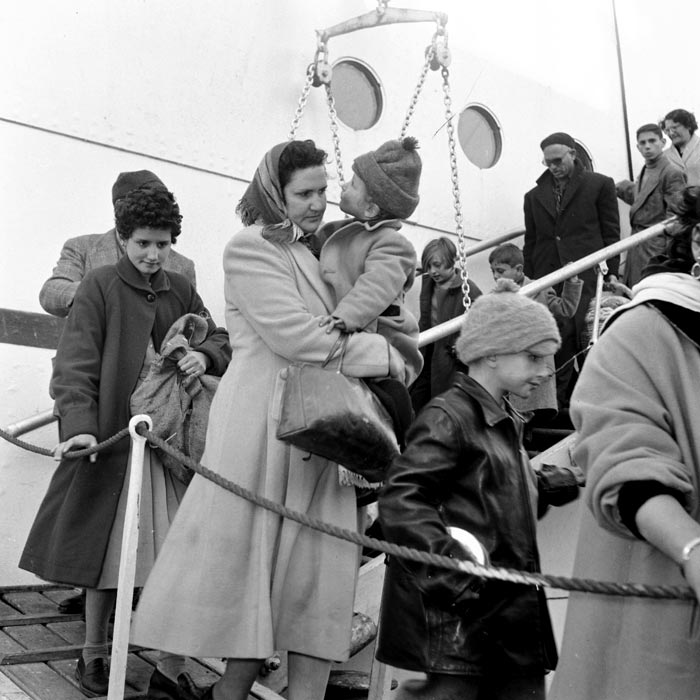
Egyptian Jewish refugees arriving in Piraeus, Greece, on the SS Mecca
During the first half of 1957, Greece was the first landing point for thousands of Jews expelled or fleeing from Egypt, who were cared for by JDC, the local Council of Jewish Communities, and the Jewish Agency before immigrating to Israel.
Greece, 1957.
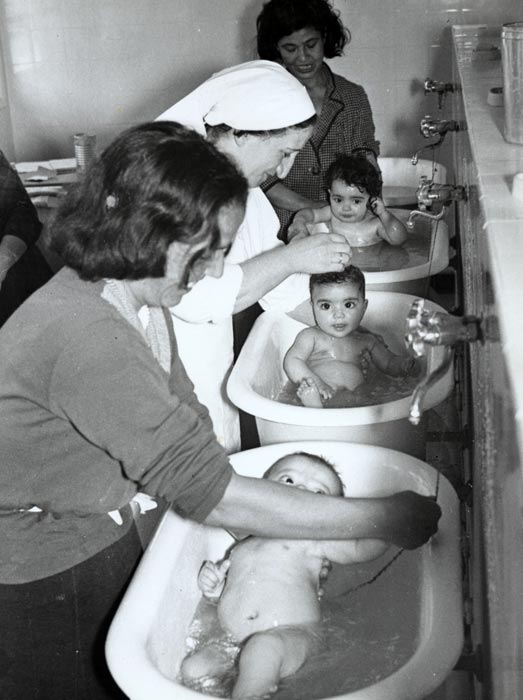
Daily baby-bathing program at the OSE clinic in Tunis for mothers from homes without running water
In 1953, with JDC support, Operation Baby Wash introduced the practice of infant bathing to poverty-stricken areas in North Africa, providing training for mothers, bathtubs, hot water, soap, towels, and other equipment.
Tunis, c.1959.
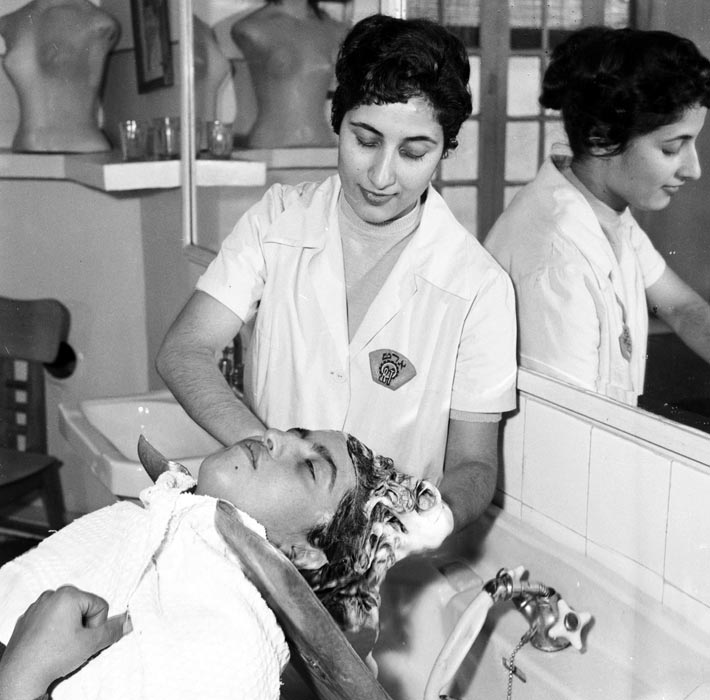
Training course in hairdressing and cosmetology at the JDC-subsidized ORT school in Tehran
Vocational training programs offered Jewish young women independence and the opportunity to join the workforce.
Tehran, c.1959.
